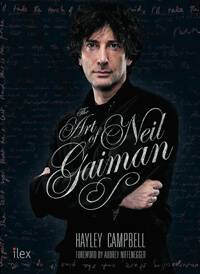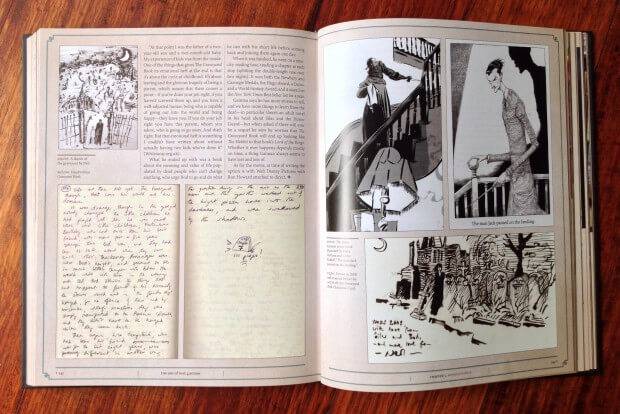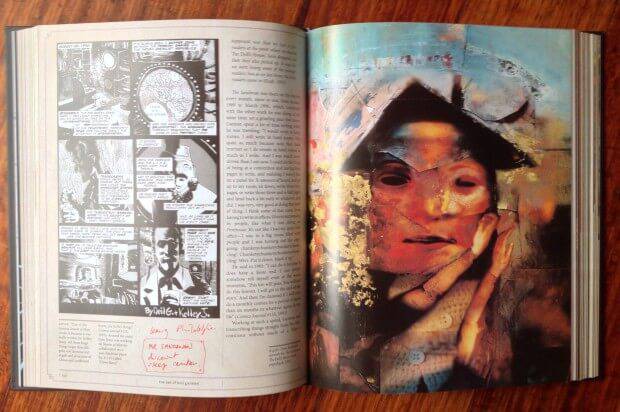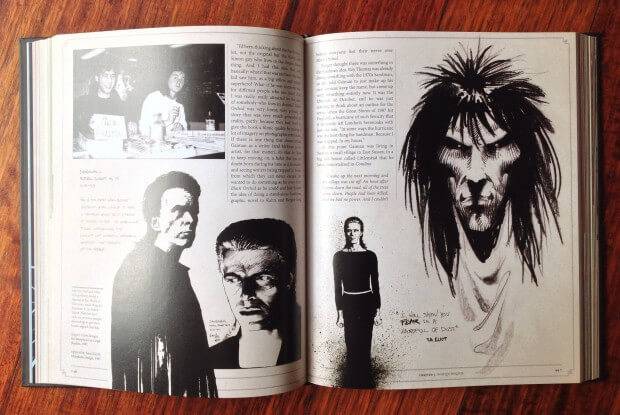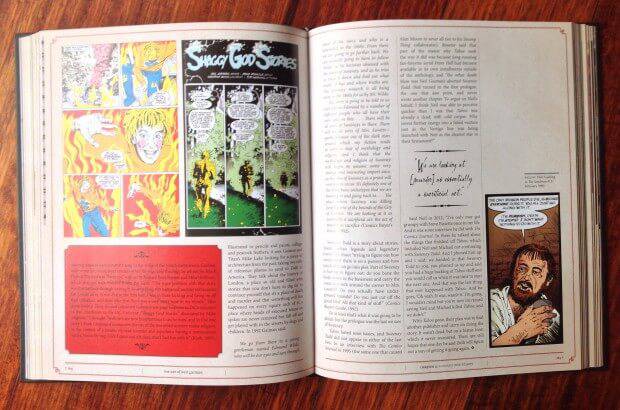The Art of Neil Gaiman
The Art of Neil Gaiman is ONE huge chunk of a book. When I unwrapped the book (birthday present), I flicked through it. Quickly scanned the pictures, because that’s what we do first, right? Read the back. Flicked through it again. Back to the front, checked out chapter titles, then to the index (what’s wrong with me?). I looked to see if Tim Burton was in there (habit), alas no partnering, yet. I then checked page references to Dave McKean (there’s lots, hurrah!). The bibliography and source index is really impressive – if you’re thinking of writing a Neil Gaiman related dissertation, this is gold!
Now then, I’m going to be honest, I’ve not read the book back to back, but I don’t think that’s what’s expected. Initially I headed straight to what I was most interested in – Coraline, Sandman, Stardust, The Graveyard Book, American Gods, The Wolves in the Walls, it’s all there – everything. I scooted past The Ocean at the End of the Lane, Gaiman’s most recent novel; and booked out of my library since it’s release. I’m a halfway through it and didn’t want to risk any spoilers (it’s giving me the weirdest of dreams).
Some of the titles are only a couple of pages in length, supporting the idea that you can dip in and out of the book. For example, this morning I read about Gaiman’s experience working on Princess Mononoke while I made toast. You can read a couple of pages, and then get on with your day. I like that.
The book is by author and friend Hayley Campbell, who had access to Gaiman’s artefacts. As a result, each of the 309 pages is jam-packed with hand written notes (fascinating), comics, screenplays, illustrations, photographs and letters of correspondence.
I like that it’s not been released as a Christmas stocking filler – makes it feel a little more personal (to me). I’ve always felt that Neil Gaiman is writing just for us. The little people at the back who are trying to twist things a little, telling us it’s okay to tell the stories we want to tell.
So then, budding storyteller, comic artist, animator, illustrator or Neil Gaiman fan, I say check the book out. It’s more than a coffee table book (whatever that means?). Put it on your desk, bedside table, behind the cushion on the sofa, on top of the microwave. If struggling with student loans, living off instant noodles and sketching on the inside of cereal boxes, then seek it out at your library. I’m certain Neil Gaiman, a supporter of libraries, would be a bit chuffed with you for doing so.
Or add it to your Christmas wish list – only 21 weeks to go!
Items mentioned in this article:
